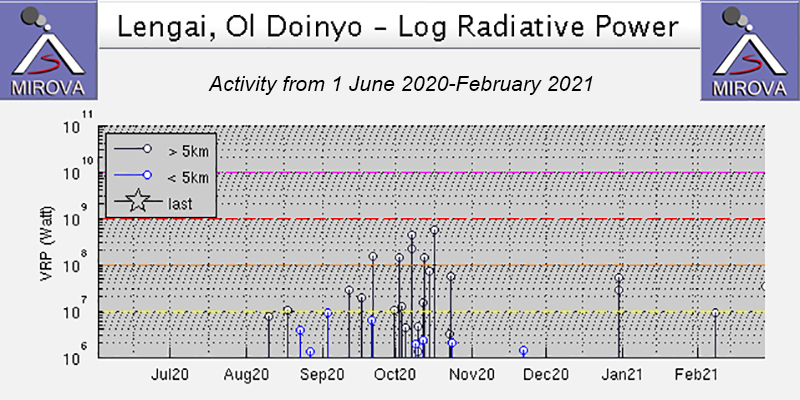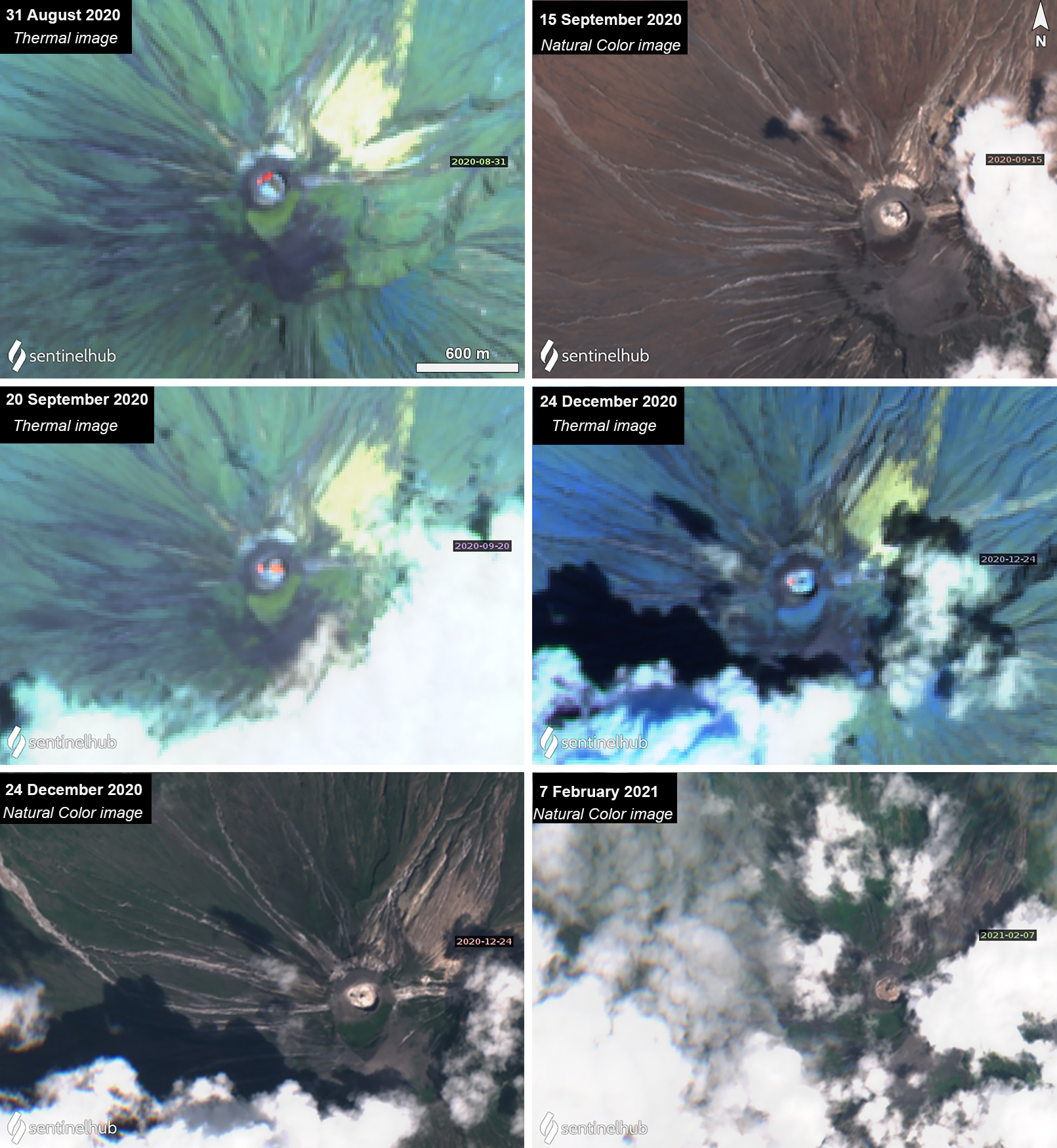Report on Ol Doinyo Lengai (Tanzania) — April 2021
Bulletin of the Global Volcanism Network, vol. 46, no. 4 (April 2021)
Managing Editor: Edward Venzke.
Edited by Kadie L. Bennis.
Ol Doinyo Lengai (Tanzania) Small lava flows in the summit crater during September 2020-February 2021
Please cite this report as:
Global Volcanism Program, 2021. Report on Ol Doinyo Lengai (Tanzania) (Bennis, K.L., and Venzke, E., eds.). Bulletin of the Global Volcanism Network, 46:4. Smithsonian Institution. https://doi.org/10.5479/si.GVP.BGVN202104-222120
Ol Doinyo Lengai
Tanzania
2.764°S, 35.914°E; summit elev. 2962 m
All times are local (unless otherwise noted)
Ol Doinyo Lengai is located near the southern end of the East African Rift in Tanzania. It is known for its unique low-temperature carbonatitic lava. Activity primarily occurs in the crater offset to the N about 100 m below the summit where hornitos (small cones) and pit craters produce lava flows and spattering. Eruptions have been recorded since the late 19th century; the current eruptive period began in April 2017 and has recently been characterized by small lava flows in the crater (BGVN 45:09). This report covers similar activity during September 2020 through February 2021 using information primarily from satellite data.
During September 2020 to February 2021 both thermal and natural color satellite imagery showed small lava flows in the summit crater. A total of six weak thermal anomalies were identified in MIROVA data during September (2), October (3), and November (1) 2020 (figure 211). No thermal anomalies were detected after late November, according to the MIROVA graph. Sentinel-2 satellite imagery showed small lava flows within the summit crater throughout the reporting period. On clear weather days, infrequent and faint thermal anomalies were observed in thermal satellite imagery within the crater; new lava flows were identified due to the change in shape, volume, and location of the thermal anomaly (figure 212). On 31 August a faint thermal anomaly was visible in the NW side of the summit crater. On 15 September fresh black lava was observed in the center of the summit crater spreading to the NW and E. Two small thermal anomalies were present on the W and E side of the crater on 20 September. On 24 December both thermal and Natural Color images showed the location of a lava flow as a thermal anomaly and as fresh lava in the center and W side of the crater. On 7 February a gas-and-steam plume was observed drifting E from the crater.
Geological Summary. The symmetrical Ol Doinyo Lengai is the only volcano known to have erupted carbonatite tephras and lavas in historical time. The prominent stratovolcano, known to the Maasai as "The Mountain of God," rises abruptly above the broad plain south of Lake Natron in the Gregory Rift Valley. The cone-building stage ended about 15,000 years ago and was followed by periodic ejection of natrocarbonatitic and nephelinite tephra during the Holocene. Historical eruptions have consisted of smaller tephra ejections and emission of numerous natrocarbonatitic lava flows on the floor of the summit crater and occasionally down the upper flanks. The depth and morphology of the northern crater have changed dramatically during the course of historical eruptions, ranging from steep crater walls about 200 m deep in the mid-20th century to shallow platforms mostly filling the crater. Long-term lava effusion in the summit crater beginning in 1983 had by the turn of the century mostly filled the northern crater; by late 1998 lava had begun overflowing the crater rim.
Information Contacts: MIROVA (Middle InfraRed Observation of Volcanic Activity), a collaborative project between the Universities of Turin and Florence (Italy) supported by the Centre for Volcanic Risk of the Italian Civil Protection Department (URL: http://www.mirovaweb.it/); Sentinel Hub Playground (URL: https://www.sentinel-hub.com/explore/sentinel-playground).



